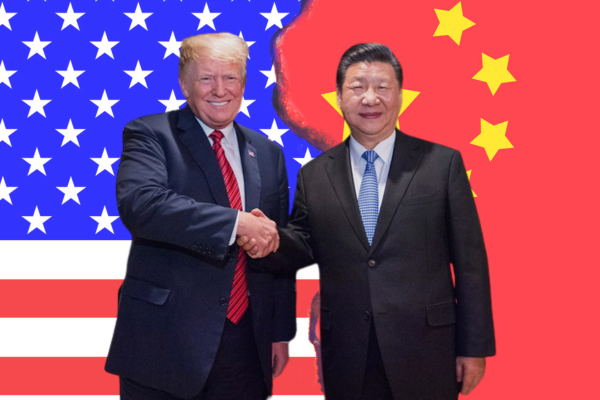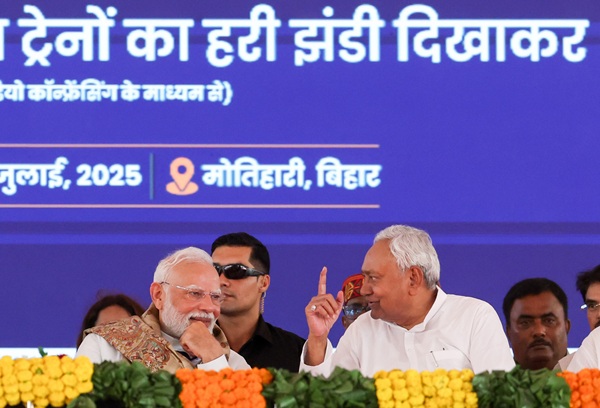.png)

Dr. Srinath Sridharan is a Corporate Advisor & Independent Director on Corporate Boards. He is the author of ‘Family and Dhanda’.
November 6, 2025 at 7:13 AM IST
The recent consultation by the Directorate General of Foreign Trade and the Department for Promotion of Industry and Internal Trade on allowing foreign direct investment in inventory-based e-commerce—albeit strictly for exports—marks yet another chapter in India’s long history of policy indecision on foreign investment. By permitting FDI in the “inventory-based” e-commerce model only for export purposes, policymakers have yet again opted for a middle path: neither an unequivocal opening nor a firm prohibition. This halfway posture is harmful: it breeds regulatory uncertainty, increases litigation risk, and undermines the ease-of-doing-business agenda India claims to pursue. Either India opens the model fully under transparent rules or it prohibits it with clarity and stick-to-itiveness. Anything between those poles is the worst of both worlds.
Under the current consolidated FDI framework, India allows 100% FDI under the automatic route for the “marketplace model” of e-commerce—the platform acts as an intermediary connecting buyers and sellers—but continues to forbid FDI in the “inventory model” where the entity owns the goods sold. The logic has been the protection of small retailers, but in practice, the distinction is blunt and increasingly hard to defend in a globalised supply-chain economy. Now the proposal to permit the inventory-based model for exports attempts to thread the needle: allow foreign investment to support Indian vendors selling abroad, while restricting it from serving the domestic market. On paper, it appears clever; in practice, it perpetuates the ambiguity that foreign investors and Indian corporates dread.
To have a credible policy, one must set out two clear choices.
Choice one: permit inventory-based e-commerce FDI fully, under transparent, stable conditions—whether for domestic or export markets—but subject to competition, consumer-protection and data governance safeguards.
Choice two: uphold the prohibition in the domestic market but clearly signal that no sub-category carve-out will be created, simplify and stabilise the marketplace-only route, and enforce that barrier with certainty.
The current regime—allowing partial, export-only engagement with strings attached—leaves investors in no-man’s land. They ask: Will tomorrow’s exception become a loophole? How will “export-only” be defined and monitored? Will the rules shift again when domestic retailers lobby? They hedge, delay commitments, and discount India’s attractiveness. In short, they proceed cautiously—if at all.
To be fair, there is a genuine political and economic dilemma at play. Policymakers must walk a razor’s edge—balancing the aspirations of small domestic traders and traditional kirana networks against the need to attract capital and signal openness. They worry, understandably, about appearing too permissive in a world dominated by powerful BigTech giants capable of underpricing, out-advertising, and out-databasing local competitors. India cannot ignore that consumer habits in the digital era are sticky—once users migrate to a global platform’s seamless ecosystem, domestic players rarely recover. The fear of digital colonialism is not unfounded. Yet the answer cannot be to keep the policy waiting. Protecting domestic enterprise and encouraging foreign investment need not be mutually exclusive—if the rules are clear, transparent, and even-handed.
For policy-makers, corporate leaders, and legislators, the argument for decisiveness is compelling. Unpredictability is among the gravest deterrents to investment. When boards spend time interpreting circulars rather than executing logistics, capital flows elsewhere. The export-only rationale, though superficially appealing, cannot contain its own drift. At its edges, the distinction between “export-only” and “domestic sales” is porous; compliance burdens mount, oversight becomes costly, and advantages diminish. If the government’s rationale is to protect domestic commerce, let it build supportive frameworks—competition law enforcement, platform oversight, SME linkages—rather than rely indefinitely on prohibitions that themselves signal distrust in global capital. The goal should be to integrate India into the global digital-commerce network, not to build a regulatory fortress of exceptions.
It is worth noting that the government’s own leadership has signalled the imperative of competition, not protection. Commerce and Industry Minister Piyush Goyal recently chided industry for seeking comforts in the “cosy comfort zone” of India’s 1.4 billion-strong domestic market and urged Indian businesses to venture outward and confront global competitors. He remarked, “It cannot be that we want open markets everywhere, but our industry is left out when you open up the Indian market.” This statement underlines that the protectionist mindset—seeking shelter behind import restrictions and carved-out FDI regimes—will not deliver the future India aspires to. If the government’s words and its policies diverge, the message to global investors is: India talks openness but practices caution. That is a mismatch no investor trusts for long.
Critics of full FDI opening will argue that inventory-based e-commerce platforms can dominate small retailers, erode domestic entrepreneurship, and enable foreign firms to capture upstream data and logistics. These concerns hold weight and deserve robust policy responses. But the answer to such risks is not a regulatory labyrinth but clear boundaries, enforceable audits, ring-fencing, and active competition oversight. For example, the policy could require that inventory operations servicing exports remain ring-fenced from domestic sales, impose transparency obligations on foreign investor ownership and contract terms, mandate independent third-party audits, and demand data localisation for domestic consumer activities while permitting global supply chain data flows. If such a regime cannot be designed with clarity and predictability, then we should revert to full prohibition and focus instead on developing Indian platforms, rather than remain trapped in a “maybe we allow, maybe we don’t” limbo.
A great irony confronts us: India aspires to be an export powerhouse, yet the rules for foreign direct investment remain riddled with caveats and exceptions that discourage rather than encourage participation. The import-substitution reflex persists, keeping investment at the doorstep. Meanwhile, business waits for clarity, global platforms delay contracts, and exporters postpone scaling. Jobs, logistics investments, and global supply-chain integration—all hang in suspension. When the world is restructuring value chains away from China and India has a moment to seize, we squander it with uncertainty. The calculus is simple: if you make the rules complex, you will get fewer participants.
Our parliamentarians and cabinet-level officials know very well: regulatory certainty is the unsung titan of growth. A policy that says “you may invest, under these opaque conditions” is far worse than one that says “you may not invest—period.” At least prohibition is definite. But the “permission-with-strings” model breeds legal disputes, regulatory arbitrage, boardroom caution and delayed decisions. Instead of focusing on execution, firms will find themselves deciphering how “control” is defined, how warehousing counts, and how cross-border flows are treated. That is policy drag, and every day of delay is capital flight to alternative investment locations.
In sum: if the government genuinely means to signal that India is open for business, that we believe in global value-chains, export-led growth, digital commerce and foreign investment, then let us see one of two robust outcomes: a clean opening of the inventory-based e-commerce model for FDI under clear, stable rules—or a transparent, binding prohibition with minimal ambiguity and rigorous enforcement. Anything in between delivers the worst of both worlds: a drag on investor confidence, a barrier to ease-of-doing-business, and a signal that India remains cautious rather than bold.
The future of India’s digital commerce, its capacity to plug into global supply chains, its ability to attract foreign logistics and warehouse investment, and its aspiration to become a global trade hub—all await this decision.




